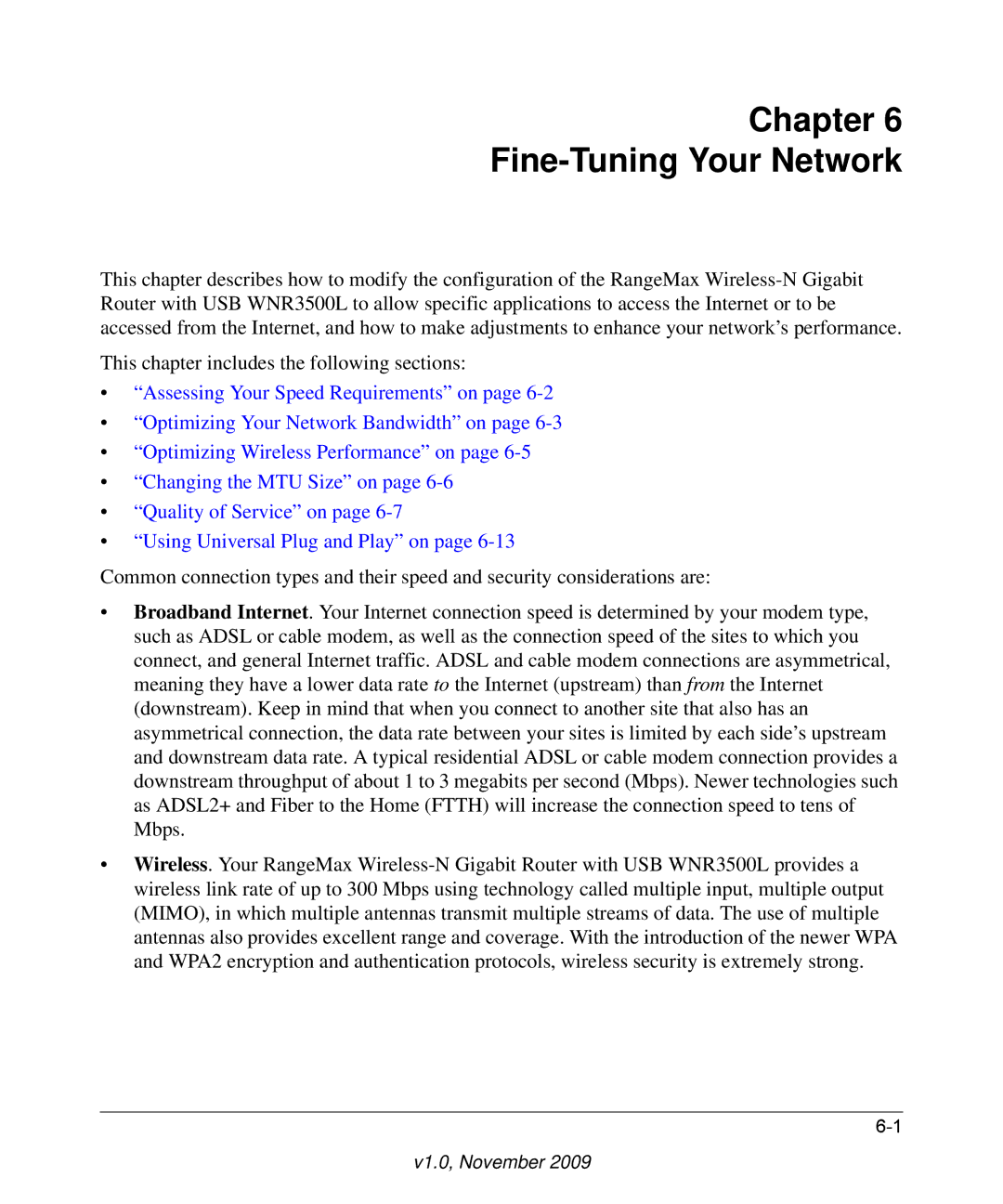Chapter 6
Fine-Tuning Your Network
This chapter describes how to modify the configuration of the RangeMax
This chapter includes the following sections:
•“Assessing Your Speed Requirements” on page
•“Optimizing Your Network Bandwidth” on page
•“Optimizing Wireless Performance” on page
•“Changing the MTU Size” on page
•“Quality of Service” on page
•“Using Universal Plug and Play” on page
Common connection types and their speed and security considerations are:
•Broadband Internet. Your Internet connection speed is determined by your modem type, such as ADSL or cable modem, as well as the connection speed of the sites to which you connect, and general Internet traffic. ADSL and cable modem connections are asymmetrical, meaning they have a lower data rate to the Internet (upstream) than from the Internet (downstream). Keep in mind that when you connect to another site that also has an asymmetrical connection, the data rate between your sites is limited by each side’s upstream and downstream data rate. A typical residential ADSL or cable modem connection provides a downstream throughput of about 1 to 3 megabits per second (Mbps). Newer technologies such as ADSL2+ and Fiber to the Home (FTTH) will increase the connection speed to tens of Mbps.
•Wireless. Your RangeMax
